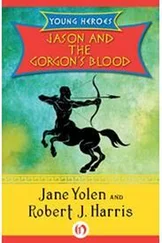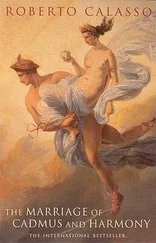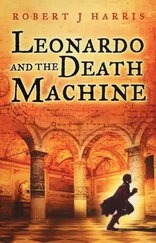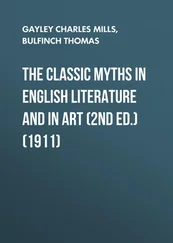But there is a danger inherent in the life of the meters. Ceremonies sap their strength. Always last in everything, by the time men found the meters they had already been used up by the gods; they were worn out: “Now the strength of the meters was exhausted by the gods, because it was through the meters that the gods reached the heavens. And the chant is rapture, mada: the rapture that is in  and in sāman , which is sap, and that sap he now injects into the meters and so restores their strength; and with their vigor now renewed the sacrifice is celebrated.” If we wanted to know why inspiration is necessary, here at last is an explanation. That “rapture” which we call inspiration is the only resource we have for reviving the meters, worn out as they are by the rash use they were once put to, not by men but by the gods. Without that “rapture” the meters would remain inert, like plants longing to be watered, mute testimony to that exploit which, through the power of a body of syllables, made the gods immortal.
and in sāman , which is sap, and that sap he now injects into the meters and so restores their strength; and with their vigor now renewed the sacrifice is celebrated.” If we wanted to know why inspiration is necessary, here at last is an explanation. That “rapture” which we call inspiration is the only resource we have for reviving the meters, worn out as they are by the rash use they were once put to, not by men but by the gods. Without that “rapture” the meters would remain inert, like plants longing to be watered, mute testimony to that exploit which, through the power of a body of syllables, made the gods immortal.
If the gods reached the heavens through a form, how much more will men have need of form if they are to reach the gods. And only the meters will allow men to become creatures who, though mortal, know how to use the forms the gods used. The meters are our témenos , the form within which all forms appear. As if coming to us through a bright mist (the one Bloom-field called the “Vedic haze,” perhaps?), all this strikes a chord, even for the reader in the West who knows nothing of Vedic rituals. It is as if those rituals had immediately developed and indeed pushed to its ultimate consequences something that in the West was to nourish not so much ritual as that extraterritorial and elusive creature we call literature. Now we begin to see why literature is so often connected to immortality, and in a sense far more radical than the, to tell the truth, rather modest achievement of being remembered by future generations.
And only now do we see why for all its many metamorphoses there is one element that literature seems never to relinquish: form. Yet it is never too explicit in laying claim to it either, nor does it seek to establish its sovereignty. Which makes us wonder: what is the myth of form? And for some time we search for it in vain, albeit convinced that, as for every other essential entity, form must have its myth. Greece offers us only the Muses, who are not so much figures of form as delicate hints of the power that every form emanates: possession, that knowledge shared by Dionysus and Apollo at Delphi, whose premise is that the mind is a hollow space constantly invaded by gods and voices. The Muses, who are above all Nymphs rangées —well-behaved Nymphs, that is — make sure that the forms do in fact take possession of us and cause us to speak following rules that may be more or less occult, the way music, Leibniz thought, is governed by an occult mathematics. But if the Muses are the supreme well-springs and custodians of forms, who are the forms themselves? Another group of female creatures: the meters who turned themselves into birds with bodies made of syllables.
It was the Vedic seers who chanted them and exercised them without cease. And it is to those seers that the cult of form, in its purest, most abstract, and most penetrating version goes back. Nor did they stop at that, but went so far as to foreshadow every claim to the self-sufficiency — even autism — of the poetic word. For since the elaboration and refinement of the word, its becoming  , “perfected,” and thus Sanskrit, was likened in the hymns of the
, “perfected,” and thus Sanskrit, was likened in the hymns of the  to every sort of activity — from the harnessing of horse and cart, to weaving, anointment, grooming, milking, cooking, seafaring — and since the Vedic seers “assimilate and confound what they compare, not having the impression that the image is a notion objectively heterogeneous to the thing that prompted it,” the practice of the hymns leads to a condition where everything that is said of the object is also applied to the word that names it; or at least one observes a “constant slippage from one register to the other.” So much so that “one could argue that the whole
to every sort of activity — from the harnessing of horse and cart, to weaving, anointment, grooming, milking, cooking, seafaring — and since the Vedic seers “assimilate and confound what they compare, not having the impression that the image is a notion objectively heterogeneous to the thing that prompted it,” the practice of the hymns leads to a condition where everything that is said of the object is also applied to the word that names it; or at least one observes a “constant slippage from one register to the other.” So much so that “one could argue that the whole  is an allegory.” But an allegory of what? Of itself. So Mallarmé’s sonnet “in ix,” which the author himself said was “allegorical of itself,” turns out to be a sharpened splinter of light gleaming back into the past so far as to shine on that collection of hymns thought to be primordial and “nonhuman,”
is an allegory.” But an allegory of what? Of itself. So Mallarmé’s sonnet “in ix,” which the author himself said was “allegorical of itself,” turns out to be a sharpened splinter of light gleaming back into the past so far as to shine on that collection of hymns thought to be primordial and “nonhuman,”  the
the  .
.
In order to make such extreme and all-embracing claims for the word of the hymns, the Vedic seers had to have a solid “base,”  No, more than solid: unshakable. And that base was the syllable. First and foremost they were makers not of words but of syllables. Syllables were the prima materia of their alchemy. If Mallarmé would remark on the wondrous phenomenon by which any fact transforms itself into its “almost vanishing vibration,” Vedic doctrine had long before superimposed on that a second and no less wondrous phenomenon: the evanescent sound substance of the syllable was celebrated as the indestructible, “the nonfluent,”
No, more than solid: unshakable. And that base was the syllable. First and foremost they were makers not of words but of syllables. Syllables were the prima materia of their alchemy. If Mallarmé would remark on the wondrous phenomenon by which any fact transforms itself into its “almost vanishing vibration,” Vedic doctrine had long before superimposed on that a second and no less wondrous phenomenon: the evanescent sound substance of the syllable was celebrated as the indestructible, “the nonfluent,”  One can squeeze a juice, a “flavor,” rasa , from anything, says the Jaiminīya
One can squeeze a juice, a “flavor,” rasa , from anything, says the Jaiminīya  . But not from the syllable: because the syllable is itself the juice of everything. It thus lives on — untarnished, inexhaustible. And from the syllable all else flows. Or rather, only the syllable allows everything to be fluid, vivid. Motionless before the barrier that was the rock of Vala, the
. But not from the syllable: because the syllable is itself the juice of everything. It thus lives on — untarnished, inexhaustible. And from the syllable all else flows. Or rather, only the syllable allows everything to be fluid, vivid. Motionless before the barrier that was the rock of Vala, the  uttered syllables. And those syllables they chanted split the rock. From the fissure burst forth the hidden Cows, the Waters. Nor have they ever stopped flowing. For if they did the world would stiffen in paralysis. This is the premise behind the Vedic meter, which is syllabic, not quantitative. Everything forms from combinations of different numbers of these sound molecules. And a mysterious allusion tells us that “what for men is a number, for the gods is a syllable.” But what is a “syllable,”
uttered syllables. And those syllables they chanted split the rock. From the fissure burst forth the hidden Cows, the Waters. Nor have they ever stopped flowing. For if they did the world would stiffen in paralysis. This is the premise behind the Vedic meter, which is syllabic, not quantitative. Everything forms from combinations of different numbers of these sound molecules. And a mysterious allusion tells us that “what for men is a number, for the gods is a syllable.” But what is a “syllable,”  ? While in modern languages “syllable” has no connotations beyond the phonetic, the Sanskrit
? While in modern languages “syllable” has no connotations beyond the phonetic, the Sanskrit  belongs to that narrow circle of words, like brahman , where an ungovernable drift of meanings overwhelms a hypothetical first meaning — hypothetical because eventually we begin to wonder if there is such a meaning, or in any event whether it can claim priority. The most obvious example is brahman . where the first meaning might be “ritual formula” or “enigma,” as Louis Renou and Lilian Silburn have maintained. But the Saint Petersburg Dictionary listed seven meanings. In the case of the
belongs to that narrow circle of words, like brahman , where an ungovernable drift of meanings overwhelms a hypothetical first meaning — hypothetical because eventually we begin to wonder if there is such a meaning, or in any event whether it can claim priority. The most obvious example is brahman . where the first meaning might be “ritual formula” or “enigma,” as Louis Renou and Lilian Silburn have maintained. But the Saint Petersburg Dictionary listed seven meanings. In the case of the  , the priority of the meaning “syllable” is clear enough, as the whole of hymn 164 of the first
, the priority of the meaning “syllable” is clear enough, as the whole of hymn 164 of the first  —or “circle”—of the
—or “circle”—of the  suggests. And on this the first commentaries we have agree.
suggests. And on this the first commentaries we have agree.
Читать дальше
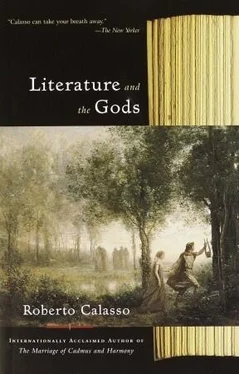
 and in sāman , which is sap, and that sap he now injects into the meters and so restores their strength; and with their vigor now renewed the sacrifice is celebrated.” If we wanted to know why inspiration is necessary, here at last is an explanation. That “rapture” which we call inspiration is the only resource we have for reviving the meters, worn out as they are by the rash use they were once put to, not by men but by the gods. Without that “rapture” the meters would remain inert, like plants longing to be watered, mute testimony to that exploit which, through the power of a body of syllables, made the gods immortal.
and in sāman , which is sap, and that sap he now injects into the meters and so restores their strength; and with their vigor now renewed the sacrifice is celebrated.” If we wanted to know why inspiration is necessary, here at last is an explanation. That “rapture” which we call inspiration is the only resource we have for reviving the meters, worn out as they are by the rash use they were once put to, not by men but by the gods. Without that “rapture” the meters would remain inert, like plants longing to be watered, mute testimony to that exploit which, through the power of a body of syllables, made the gods immortal. , “perfected,” and thus Sanskrit, was likened in the hymns of the
, “perfected,” and thus Sanskrit, was likened in the hymns of the  to every sort of activity — from the harnessing of horse and cart, to weaving, anointment, grooming, milking, cooking, seafaring — and since the Vedic seers “assimilate and confound what they compare, not having the impression that the image is a notion objectively heterogeneous to the thing that prompted it,” the practice of the hymns leads to a condition where everything that is said of the object is also applied to the word that names it; or at least one observes a “constant slippage from one register to the other.” So much so that “one could argue that the whole
to every sort of activity — from the harnessing of horse and cart, to weaving, anointment, grooming, milking, cooking, seafaring — and since the Vedic seers “assimilate and confound what they compare, not having the impression that the image is a notion objectively heterogeneous to the thing that prompted it,” the practice of the hymns leads to a condition where everything that is said of the object is also applied to the word that names it; or at least one observes a “constant slippage from one register to the other.” So much so that “one could argue that the whole  is an allegory.” But an allegory of what? Of itself. So Mallarmé’s sonnet “in ix,” which the author himself said was “allegorical of itself,” turns out to be a sharpened splinter of light gleaming back into the past so far as to shine on that collection of hymns thought to be primordial and “nonhuman,”
is an allegory.” But an allegory of what? Of itself. So Mallarmé’s sonnet “in ix,” which the author himself said was “allegorical of itself,” turns out to be a sharpened splinter of light gleaming back into the past so far as to shine on that collection of hymns thought to be primordial and “nonhuman,”  the
the  .
. No, more than solid: unshakable. And that base was the syllable. First and foremost they were makers not of words but of syllables. Syllables were the prima materia of their alchemy. If Mallarmé would remark on the wondrous phenomenon by which any fact transforms itself into its “almost vanishing vibration,” Vedic doctrine had long before superimposed on that a second and no less wondrous phenomenon: the evanescent sound substance of the syllable was celebrated as the indestructible, “the nonfluent,”
No, more than solid: unshakable. And that base was the syllable. First and foremost they were makers not of words but of syllables. Syllables were the prima materia of their alchemy. If Mallarmé would remark on the wondrous phenomenon by which any fact transforms itself into its “almost vanishing vibration,” Vedic doctrine had long before superimposed on that a second and no less wondrous phenomenon: the evanescent sound substance of the syllable was celebrated as the indestructible, “the nonfluent,”  One can squeeze a juice, a “flavor,” rasa , from anything, says the Jaiminīya
One can squeeze a juice, a “flavor,” rasa , from anything, says the Jaiminīya  . But not from the syllable: because the syllable is itself the juice of everything. It thus lives on — untarnished, inexhaustible. And from the syllable all else flows. Or rather, only the syllable allows everything to be fluid, vivid. Motionless before the barrier that was the rock of Vala, the
. But not from the syllable: because the syllable is itself the juice of everything. It thus lives on — untarnished, inexhaustible. And from the syllable all else flows. Or rather, only the syllable allows everything to be fluid, vivid. Motionless before the barrier that was the rock of Vala, the  uttered syllables. And those syllables they chanted split the rock. From the fissure burst forth the hidden Cows, the Waters. Nor have they ever stopped flowing. For if they did the world would stiffen in paralysis. This is the premise behind the Vedic meter, which is syllabic, not quantitative. Everything forms from combinations of different numbers of these sound molecules. And a mysterious allusion tells us that “what for men is a number, for the gods is a syllable.” But what is a “syllable,”
uttered syllables. And those syllables they chanted split the rock. From the fissure burst forth the hidden Cows, the Waters. Nor have they ever stopped flowing. For if they did the world would stiffen in paralysis. This is the premise behind the Vedic meter, which is syllabic, not quantitative. Everything forms from combinations of different numbers of these sound molecules. And a mysterious allusion tells us that “what for men is a number, for the gods is a syllable.” But what is a “syllable,”  ? While in modern languages “syllable” has no connotations beyond the phonetic, the Sanskrit
? While in modern languages “syllable” has no connotations beyond the phonetic, the Sanskrit  belongs to that narrow circle of words, like brahman , where an ungovernable drift of meanings overwhelms a hypothetical first meaning — hypothetical because eventually we begin to wonder if there is such a meaning, or in any event whether it can claim priority. The most obvious example is brahman . where the first meaning might be “ritual formula” or “enigma,” as Louis Renou and Lilian Silburn have maintained. But the Saint Petersburg Dictionary listed seven meanings. In the case of the
belongs to that narrow circle of words, like brahman , where an ungovernable drift of meanings overwhelms a hypothetical first meaning — hypothetical because eventually we begin to wonder if there is such a meaning, or in any event whether it can claim priority. The most obvious example is brahman . where the first meaning might be “ritual formula” or “enigma,” as Louis Renou and Lilian Silburn have maintained. But the Saint Petersburg Dictionary listed seven meanings. In the case of the  , the priority of the meaning “syllable” is clear enough, as the whole of hymn 164 of the first
, the priority of the meaning “syllable” is clear enough, as the whole of hymn 164 of the first  —or “circle”—of the
—or “circle”—of the  suggests. And on this the first commentaries we have agree.
suggests. And on this the first commentaries we have agree.

